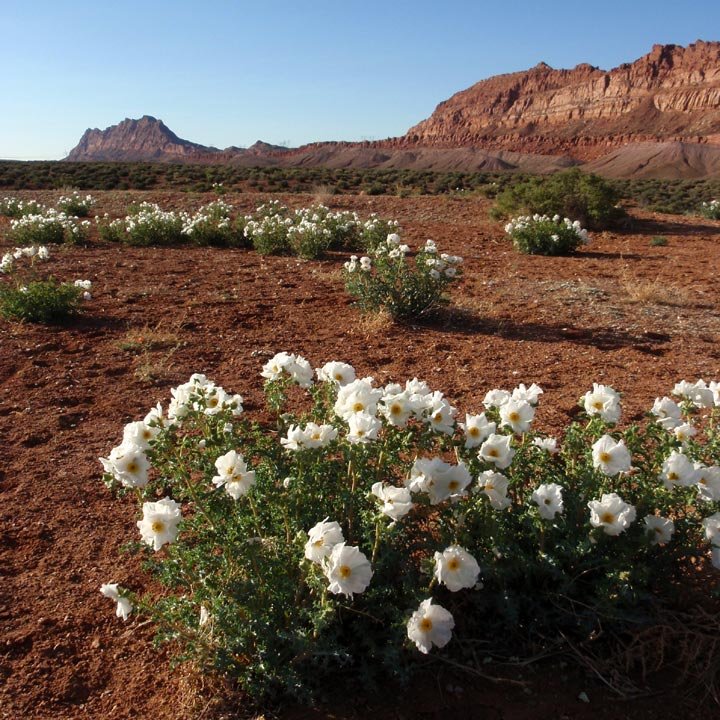Southwestern Prickly Popy
Argemone pleiacantha
Family: Papaveraceae
These prickly, thistle-like perennials grow in warm weather and bloom in summer into fall. They may go dormant or need to at least be cut back occasionally to look good. Plants have white flowers with yellow centers, resembling a fried egg. Prickly capsules with small black seeds follow the flowers. Plants can grow to 4’ tall when blooming, often found shorter if they are in drier, tougher conditions.
Full to part sun, moderate water with good drainage. Plants hardiness isn’t well-known but they grow in some cold places in our region, and probably can go down below 0°F.
Prickly poppies have a solid history of herbal use and cultivation. They have been studied in research laboratories for several of their potential pharmaceutical effects. Argemone pleiacantha and other species of the Argemone genus have been shown to have a variety of medicinal properties, including anti-inflammatory, analgesic, antibiotic, antimalarial, and anti-tumor effects.
This species is pollinated by a variety of insects, including bees, flies, beetles, and butterflies. Larval host for some moth species:
Neoterpes ephelidaria
Sicya pergilvaria
Platynota labiosana
Trichoplusia ni
Photo by Sue Carnahan, SEINET
Argemone pleiacantha on iNaturalist
There are 17 species of Argemone in Arizona (25 native to the Americas including Hawaii), this is the most common species. Argemone from Greek argemos, a white spot (cataract) on the eye, what it was supposed to cure, pleiacantha is from Greek pleios, many, more than one and akantha, thorn.
Found on dry gravelly soil, foothills and mountain valleys from 2,500-7,500 ft. in Arizona, New Mexico, and in Mexico in Sonora and Chihuahua.
The pale prickly poppy (Argemone ochroleuca) is noted for its solid yellow flowers, photo by Robert Anthony Villa, SEINET
Argemone mexicana has small, 3-petaled flowers on very upright-growing plants. Photo by Patrick Alexander, SEINET

The foliage of Argemone arizonica, which has similar flowers to A. pleiacantha, but much more elaborate leaves. Photo by Tom Chester, SEINET

The attractive Argemone corymbosa, photo by Max Licher, SEINET



